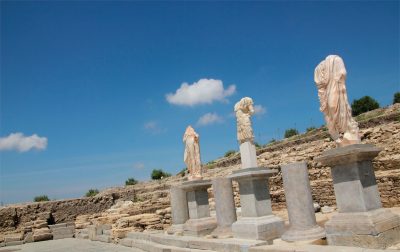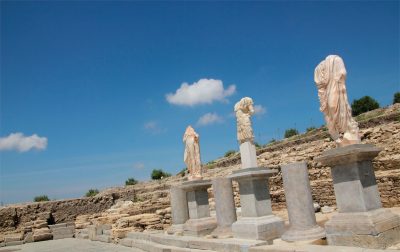The main historical inhabited enclave in Baena’s rural setting is the town known as Torreparedones. It was first Iberian and Roman, it then became a military enclave during the Medieval period and was rediscovered in recent excavations.
It was inhabited for at least 3500 years, from the Copper Age until the Low Middles Ages. Torreparedones reached its height during Iberian and Roman times. It’s powerful wall, reinforced with towers, surrounding a 10.5-Ha space was already present from the 6th century BC. The site was known since the Early Modern Period given the remarkable remains that appeared. Many scholars mentioned it as an important site “during Roman times” or in reference to the controversial martyrs, Saints Nunil and Alodia.
The chance finding of “Pompey’s Mausoleum” in 1833 was a milestone in the site’s history, as it gained the attention of many Spanish and foreign researchers. It was a monumental tomb that contained incinerated remains of more than 12 family members, with their names engraved on stone urns.
Torreparedones reached its height during the Iberian and Roman era when it achieved colony or town status. The most outstanding findings correspond to this era. One of the most important settlements to date is the sanctuary located to the south, outside the city walls, where hundreds of stone-carved ex-votos were found. For several centuries devotees placed them as offerings to the deity that they adored: DeaCaelestis.
Visitors can also observe the restored east gate and the most noble part of the Roman town: the court, the market and Decumanus Maximus, as well as the Medieval Castle’s remains, which was the last building to be inhabited until the 15th century.
Address
Address:
Ctra. A- 325, km 18, Torreparedones, baena
GPS:
37.7546911, -4.377496800000017










